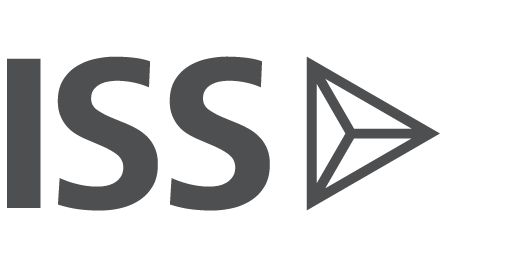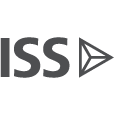Six New Financial Metrics to Supplement TSR
ROCKVILLE, MD (November 8, 2016) – Institutional Shareholder Services Inc. (ISS), a leading provider of governance and responsible investment solutions to the global financial community, today announced changes to the methodology underlying its pay-for-performance models for companies in the U.S., Canada, and Europe to take effect Feb. 1, 2017.
Following feedback from institutional investors, companies, and other market constituents, in proxy voting reports issued on companies in the U.S. and Canadian markets, ISS will present relative evaluations of return on equity, return on assets, return on invested capital, revenue growth, EBITDA growth, and cash flow (from operations) growth. The additional financial measures will supplement ISS’ legacy (and continued) use of total shareholder return (TSR) as a key metric for assessing corporate performance in the context of evaluating executive compensation.
“The inclusion of these six financial metrics will provide our clients a more robust analysis when gauging executive compensation relative to company performance at portfolio companies,” said Roy Saliba, ISS’ Head of Global Compensation Products. “Against the backdrop of a rapidly shifting landscape for executive pay, we are committed to providing our clients with the most comprehensive pay-related analytics and responding to the evolving needs of the marketplace.”
Investor respondents to ISS’ 2017 global benchmark policy survey were highly supportive of using metrics beyond TSR for pay-for-performance evaluations, with 79 percent answering that they support or strongly support the use of additional metrics. Nineteen percent of investors were neutral about the idea, and only 3 percent were opposed or strongly opposed. Similarly, issuers strongly supported the use of additional metrics, with 68 percent responding that they support or strongly support the inclusion of additional financial metrics, while only 11 percent of issuer respondents opposed or strongly opposed their inclusion. A breakdown of survey results is available here.
Pay-for-performance updates for U.S. companies include the following:
- A new standardized comparison of the subject company’s CEO pay and financial performance ranking relative to its ISS-defined peer group will be added to ISS’ benchmark policy proxy research reports beginning Feb. 1, 2017. Financial performance will be measured by a weighted average of multiple financial metrics including return on equity, return on assets, return on invested capital, revenue growth, EBITDA growth, and cash flow (from operations) growth. The metrics and weightings will be based on the company’s four-digit GICS industry group, and are based on extensive back-testing over multiple years. The financial performance and pay ranking information will be displayed for all companies subject to ISS’ quantitative pay-for-performance screens. While this information will not impact the quantitative screening results during the 2017 proxy season, it may be referenced in the qualitative review and its consideration may mitigate or heighten identified pay-for-performance concerns.
- Relative Degree of Alignment (RDA) assessment will only be considered in the overall quantitative concern level when the subject company has a minimum of two years of pay and TSR data. Companies that only have one year of data will receive an N/A (not applicable) concern for their RDA test.
Pay-for-performance updates for Canadian companies include the following:
- Similar to the U.S. market, a new standardized comparison of the subject company’s CEO pay and financial performance ranking relative to its ISS-defined peers is being added to the ISS benchmark policy proxy research reports beginning Feb. 1, 2017.
- The ISS peer group construction methodology will now incorporate information from each company’s self-determined peers for pay benchmarking purposes. Those peer selections, along with the GICS industry groups that those peers are selected from, will inform ISS’ peer group construction process. The methodology will continue to maintain a focus on identifying companies that are considered sufficiently similar to the subject company in terms of industry and size (based on one or more of revenue, assets, and market capitalization). In assessing Canadian issuers, only companies domiciled in Canada are included in the ISS peer construction process and that approach will also apply to a company’s self-disclosed peers so that any identified peers not domiciled in Canada will be excluded.
- Companies subject to the ISS Pay-for-Performance test and with annual general meetings between February 1, 2017 and September 15, 2017 will have an opportunity to inform ISS of changes to the company’s self-selected peer groups for the 2017 proxy season, since ISS must construct peer groups for the upcoming 2017 season prior to the companies’ new disclosures becoming available.
- Consistent with the updated U.S. methodology, the RDA concern level will only be considered in the overall quantitative concern level when the subject company has a minimum of two years of pay and TSR data. Companies that only have one year of data will receive an N/A (not applicable) concern for their RDA test.
Pay-for-performance updates for European companies include the following:
- The ISS pay-for-performance test will be extended beyond the STOXX Europe 600 Index to cover any company that is a constituent either of the STOXX Europe 600 Index or of each covered country’s local main index. The expanded coverage, which will now include more than 1,100 European-based companies, will ensure a consistent application of the quantitative tests across covered universes and will align the European coverage of pay-for-performance assessments in ISS benchmark research coverage with that for ISS QualityScore.
- Drawing on investor and corporate feedback after the first year of ISS pay-for-performance assessments in Europe, ISS’ peer group construction methodology will now incorporate information from companies’ self-determined pay benchmarking peers. Information regarding selected peers, as well as the GICS industry groups that those peers are selected from, will inform ISS’ peer group construction process. As in the U.S. and Canadian markets, the methodology will continue to focus on identifying companies that are considered sufficiently similar to the subject company in terms of industry and size (based on one or more of revenue, assets, and market capitalization). Only companies domiciled in Europe are included in the peer construction process and that approach will also apply to the inclusion of company self-determined peers.
- Because ISS must construct peer groups for 2017 before companies’ new disclosures are available, European companies covered by the ISS pay-for-performance model and with annual general meetings between February 1, 2017, and January 31, 2018, will have an opportunity to inform ISS of changes to company self-selected peer groups for the 2017 annual meeting season.
- Pay-for-Performance factors are now a part of the Remuneration Pillar in ISS QualityScore and will reference the pay-for-performance results from the RDA, Multiple of Median (MOM), and Pay-TSR Alignment (PTA) tests that can be viewed on each company’s ISS benchmark research report. For newly covered companies, the pay-for-performance questions will apply only after the first ISS benchmark research report is published for these companies where a pay-for-performance analysis is included. For the first year, these factors are included in ISS QualityScore for reference purposes only.
ISS’ peer submission window will be open starting on Nov. 28, 2016, and will close on Dec. 9, 2016, for eligible companies, including those subject to the new pay-for-performance measures. To streamline and consolidate company workflow onto a single platform, peer submissions will be handled via ISS Corporate Solutions’ (ICS) Governance Analytics platform, which is the same location companies visit to download their complimentary ISS proxy research analysis and to verify data underlying their equity plans and ISS QualityScore. Additional instructions for companies on the peer submission window will follow in the coming days.
The forthcoming peer submission window marks the extension of this facility to European and Canadian companies for the first time. Moving forward, European companies will see their peer submission window opened annually late in the year, while Canadian and U.S. corporations will have theirs opened twice annually, once late in the year and once during the middle of the year.



